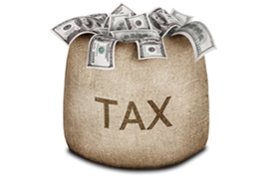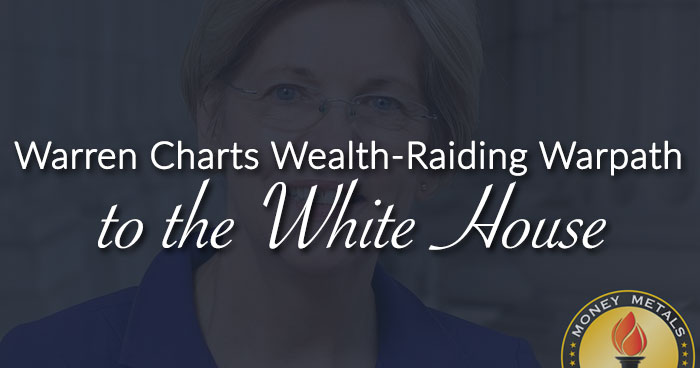Despite the gravity of an impeachment inquiry that threatens to bring down the presidency of Donald J. Trump, markets have largely shrugged it off.
The reason? The odds of a two-thirds majority in the Republican-controlled Senate voting to remove Trump from office are slim.
What has Wall Street more concerned are the rising odds of Elizabeth Warren becoming the Democrat nominee for president. Her surge (and Joe Biden’s weakness) in the polls may have even contributed to some of last week’s stock market volatility.
The Democrats’ 2016 nominee, Hillary Clinton, was a status quo candidate who had the backing of billionaires, bankers, and big tech. Warren, on the other hand, worries wealth holders of all stripes with her proposals to break up some of America’s largest corporations and impose an array of confiscatory new taxes.
One of Warren’s signature campaign promises is to impose a “wealth tax.” It would introduce a dangerous new concept into the tax code – namely that the government gets to tax not just capital gains on investments, but also the market value of investments and other household assets taken together.
Under Warren’s plan, the government would take 2% of a household’s assets above $50 million. The tax would increase to 3% for wealth above $1 billion.

Of course, it is being marketed as a tax on “the rich.” That’s how the income tax was initially sold to the American people. As we now know, the thresholds for how “rich” gets defined can quickly slide into the middle class.
As proposed, Warren’s wealth tax would generate just over $200 billion per year. That’s not even close to enough to cover the current annual budget deficit of $960 billion (and rising), let alone the laundry list of new spending programs Warren wants to roll out.
Once imposed on a small segment of wealthy Americans, a wealth tax would become a revenue source for a chronically over-spending government that could be gradually expanded to capture more and more Americans’ wealth.
Imagine having to account for the value of all your assets – from your financial accounts to your home, your car, and your personal possessions.
Consider an example that “Pocahontas” might identify with a collection of Gold Indian Head coins.
You might have held some of these U.S. coins, originally minted in the early 1900s, secretly in a safe for decades without ever needing to account for their value. Under current law, they generate no tax liabilities or reporting requirements until they are sold or bequeathed.
Under a wealth tax, gold coins and other tangible assets in your possession could get an annual scalping by the government.
Regardless of whether such a proposal ever gets enshrined into law, the government will be looking for ways to raise revenues in the years ahead as budget deficits expand. One way to hedge against a Warren wealth tax and other forms of tax increases on investments is by moving assets you want to protect into a tax-sheltered IRA.
For now, at least, the rules are clear: the government can’t tax IRA assets, including IRA-eligible physical precious metals products until you take distributions. And with a Roth IRA, you may be able to avoid taxes completely even as tax risks rise.

About the Author:
Stefan Gleason is CEO of Money Metals Exchange, the company recently named "Best Overall Online Precious Metals Dealer" by Investopedia. A graduate of the University of Florida, Gleason is a seasoned business leader, investor, political strategist, and grassroots activist. Gleason has frequently appeared on national television networks such as CNN, FoxNews, and CNBC and in hundreds of publications such as the Wall Street Journal, TheStreet, and Seeking Alpha.





